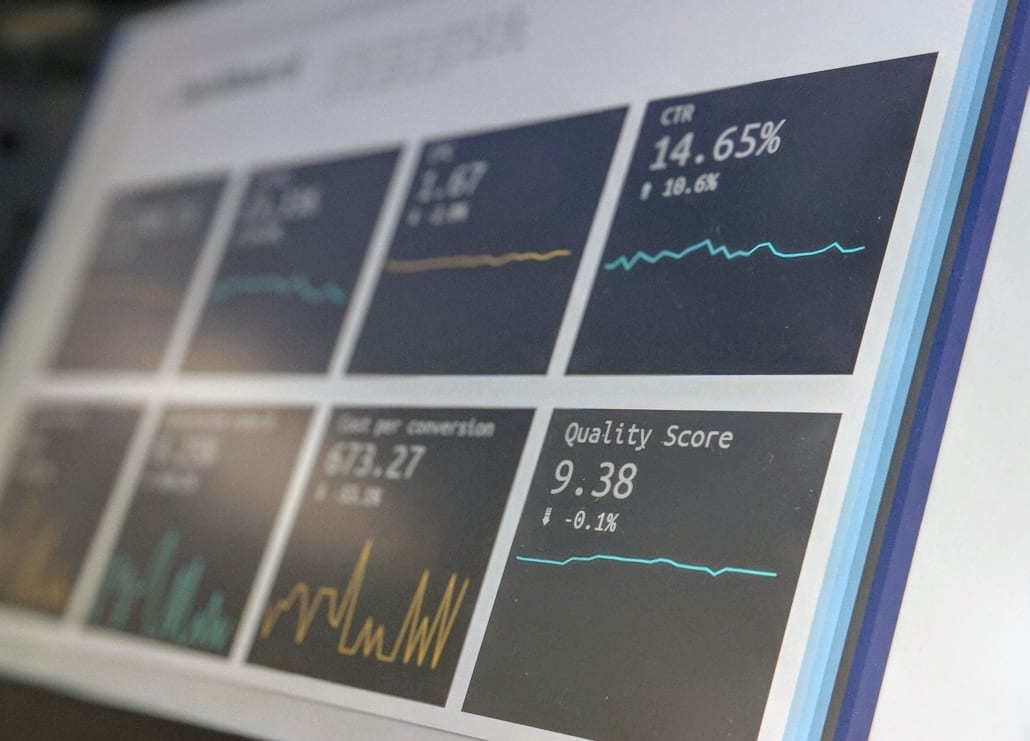8 Essential Tracking Strategies You Need To Succeed
In the business world, success is everything. You don’t need to have a capitalistic mind to agree: Without success, your business fails. Costs increase, profits fall, and ultimately the business faces bankruptcy. But success depends on your ability to take strategic decisions that will benefit the company. Most entrepreneurs, when they launch their first business, tend to imagine that the skills of business management come naturally to those who are in the right position. In reality, effective management relies on informed decisions. These strategic decisions we’ve mentioned, they don’t just come as divine inspiration. They are the result of thorough and analytical research, done by experts in their fields. In other words, great business decisions come from using the appropriate business data. You need to track your performance today to find room for improvement and to grow your business tomorrow. Sounds simple enough, wouldn’t you say? Here’s a list of the most important tracking strategies that you need to implement in your company.

Why do businesses need to track data?
It’s well known that large companies have implemented complex tracking strategies within their structure. Small businesses, on the other hand, tend to reject the idea of tracking as they often consider it a waste of time. Nobody can blame small companies for coming to that unfair conclusion. After all, they don’t have sufficient resources or time to create large-scale data tracking strategies. But becoming a data genius in a small company can still be a useful way to identify useful data for your business survival. Tracking everything is time-demanding. Nevertheless, it’s important to gather knowledge about everything that relates to your business, including employees, customers, and web interactions – assuming you have a website. Thankfully, there are a few useful tools that can be easily implemented, even in small companies, and that are designed to provide you with the necessary knowledge to take informed decisions: CRM tools, task management tools, and web traffic tools are already available on the market.
How is your SEO performance?
When your website is your main marketing tool and the key tool of your online presence, it’s essential to make sure that it is equipped to rank high in the search engine results, which is why SEO for small business is so vital. As a result, most companies need to work on a regular basis with a specialist agency that offers practical SEO audits services. The audit will highlight areas of improvement and identify strategies to improve your ranking scores. It’s also important to stay on top of the Google ranking updates so that your website doesn’t suffer any penalties for not following the latest SEO best practices promoted by Google. As a rule of the thumb, SEO audits, carried out by a leading SEO agency, consider your keyword choices and its ranking in comparison with your competitors. It also helps you to identify further relevant keywords that you might be missing. Additionally, it will highlight technical changes that need to be made to improve your ranking abilities, such as adding micro data and respecting the scheme.org etiquette.
Is your branding consistent?
For businesses, whether online, offline or both, your branding strategy is your identity. Consequently, keeping a consistent brand identity is the best way to convey an image of reliability for your business. If you start by changing your logo and then play with the layout, the color scheme, and the content until you’ve found a brand image that you like, you risk losing a lot of customers in the process. Your visitors want to feel like they are interacting with the same company when they read your online content. This means that the tone of voice in your product pages and your blog articles needs to remain the same; the social media platforms need to promote your business values too; and finally you need to share the same visual look and feel across all platforms – in short, don’t use a different logo or color scheme between your website and your Twitter account, for example. Consequently, tracking your brand online presence is the most effective way to guarantee that you share a homogenous message.

Photo courtesy of Pixabay
Are you a social media influencer?
The great thing about using social media platforms is that you can engage directly with your customers, leads, partners, and investors. The problem is that too many companies tend to use social media in a very self-centered manner. They only talk about their brand, but they don’t create any exchange with other social media users. This kind of social media strategy is pointless and doesn’t generate any positive result for the company. Therefore, you should investigate the possibility to track social media engagement, as a way of monitoring the effectiveness of your social media strategy. There are plenty of ways to measure engagement, and the best strategies combine several tracking methods. Monitoring likes and shares on your social media posts indicates how other users reacted to your message. You will need to add audience growth indicators to ensure that your posts are touching a wide group. Finally, keeping track of active fans vs. passive fans is also a solid indication of your performance.
What’s the ROI of your website?
Thanks to Google Analytics and Google Adwords, small companies don’t need to pay to track the performance of their website. Using the Analytics tracking code, you can stay informed in real time of how your website is doing and how people are using it. Additionally, you can create conversion tracking codes, which are used to track positive interactions on the website, such as a customer registering to a membership program or someone committing to purchase. Conversions can help you to give a monetary value to your website. For eCommerce sites, the monetary value is pretty easy to define, as all you need to do is to track the actual purchase value. You can use this value to identify the most valuable content on your site. Pages that receive little views and don’t generate a conversion have no ROI. For websites that don’t offer online products to buy, the monetary value will be defined by combining the digital touchpoints that lead to a business purchase. Pages that are not viewed, again, may not support revenue growth for the website.
 Photo courtesy of Pixabay
Photo courtesy of Pixabay
What is the overall productivity in the workplace?
If you’ve heard that your employees are your most precious asset, you might want to measure the truth of that saying in the workplace, namely by monitoring your business productivity. For a lot of companies, the idea of tracking business productivity brings to mind an image from Modern Times with Chaplin running through a factory to finish his task. In reality, monitoring productivity can be done in any line of work and provides useful information for improvement. In offices, it’s about tracking the amount of time spent on each project, using a time management tool. This is extremely useful to identify issues with projects and with work practices so that most the project manager and the employee can think of the ideal solution for their problems.
What’s the employee’s satisfaction?
Using smart and playful survey system, you can track the level of satisfaction of your employees. What this means is that you can very easily identify frictions and pressure points before they damage your team. For instance, this kind of survey is extremely useful if you are implementing a new business strategy. You should run a survey at the beginning of the implementation and a few months later when everyone has got used to the change. This allows you to track good ideas, and change management direction before your employees leave you. Additionally, employee satisfaction surveys need to be run yearly, even if you don’t introduce new strategies. Consider it a checkup on your business health.
Don’t let competitors surprise you
Competitors never stop working on a new service product or way to approach the market. Consequently, you should alway keep an eye on their activities to make sure that you are prepared for anything new. Beware, this doesn’t mean engaging in illegal spying activities. It’s about making the most of useful marketing tools to keep yourself informed! Working with SEMrush enables you to track the keyword ranking of your competitors in any search engines. Not only can you discover relevant keywords but you can also find out their best-performing ones. Ads tracking tools – SocialAdNinja for example – are extremely useful to spy on effective campaigns and eventually learn a few tips from your competitors! The more you know about their activities, the better equipped you are to beat them. But remember: What you do to them, they can do to you too, so be smart with your marketing and don’t plagiarize their ads.
What are the latest digital trends?
The digital trends change and evolve all the time. From responsive design, marketers have now moved to interactive video strategies and virtual reality integration. In other words, keeping track with the market trends means that you can provide your customers with a communication campaign that is anchored in real time and respond to their needs.
Tracking data is the only way for businesses to aggregate knowledge about the performance of their employees, their customers, and their websites. Knowledge is the base to build further successful campaigns and business strategies. But knowledge is only a platform for more creativity. Data don’t provide the solution. They only paint the situation. Innovative thinking and imagination as a response to identified problems are what success is made of.

 Dr. Rhian Silvestro is Associate Professor of Operations Management at Warwick Business School. Rhian has conducted service management research in a number of large, leading edge organisations including retail companies, banks, transport companies, health services and call centres. She has publications in over ten international journals in the fields of service design, performance improvement and supply chain integration.
Dr. Rhian Silvestro is Associate Professor of Operations Management at Warwick Business School. Rhian has conducted service management research in a number of large, leading edge organisations including retail companies, banks, transport companies, health services and call centres. She has publications in over ten international journals in the fields of service design, performance improvement and supply chain integration. Effective performance measurement systems consist of high-quality individual measures associated with a strongly interrelated framework. Using this deliberately developed framework, leaders ascertain organizational performance quickly and accurately. The system itself should be economic to maintain and provide readily available updates typically necessitating a degree of automation. Quality systems present the same view of performance to a broad number of individuals within the organization concurrently. To achieve all of these qualities, each measure must be well thought-out and developed individually and then integrated into the collective system.
Effective performance measurement systems consist of high-quality individual measures associated with a strongly interrelated framework. Using this deliberately developed framework, leaders ascertain organizational performance quickly and accurately. The system itself should be economic to maintain and provide readily available updates typically necessitating a degree of automation. Quality systems present the same view of performance to a broad number of individuals within the organization concurrently. To achieve all of these qualities, each measure must be well thought-out and developed individually and then integrated into the collective system.
 A performance measure’s value evolves from its ability to instigate and/or influence action. To do this, the measure must accurately reflect materially important performance parameters and present that information in a timely, readily understandable manner. It is to this later characteristic that performance metric style sheets are critically important.
A performance measure’s value evolves from its ability to instigate and/or influence action. To do this, the measure must accurately reflect materially important performance parameters and present that information in a timely, readily understandable manner. It is to this later characteristic that performance metric style sheets are critically important. Speaking two languages makes you bilingual, and speaking three makes you trilingual. Any more than that, and you are a polyglot. In today’s data-driven business world, you are a data scientist if you can “speak data”.
Speaking two languages makes you bilingual, and speaking three makes you trilingual. Any more than that, and you are a polyglot. In today’s data-driven business world, you are a data scientist if you can “speak data”.